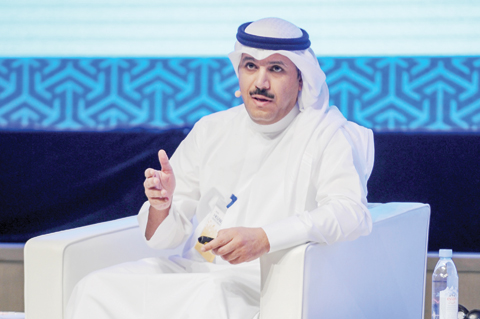Central Bank raises discount rate
 Central Bank Governor
Central Bank Governor
Mohammad Al-Hashel
KUWAIT: Governor of the Central Bank of Kuwait Mohammad Al-Hashel emphasized on Wednesday that the main objective of Kuwait's fiscal, monetary and monitoring policies is sustainable prosperity. All financial indicators such as liquidity, profitability and asset quality affirm the strength, resilience and flexibility of Kuwait's banking sector, Hashel said in his speech during the second day of the Kuwait Investment Forum 2018. He pointed out that Kuwait's economic indicators are encouraging and attractive to investors.
The country has great potential and distinguished geographical location, as well as policies help turn these potential into investment opportunities for achieving the sustainability of welfare, he clarified. He suggested that even challenges are providing great investment opportunities in the national economy. The country had a distinctive geographical location and huge oil reserves, which account for eight percent of the world's reserves, and well-developed legislative and institutional systems guarantee principles of efficiency, fairness and transparency, he added.
Hashel elaborated Kuwait had large financial buffers that were built up over a period of time thanks to prudent fiscal policies that were based on two pillars investment and saving. These buffers enabled the country to carry out gradual structural economic reforms and helped retain monetary and financial stability, he argued. As for the indicators of the strength of the Kuwaiti economy, Hashel said that the non-oil GDP growth has increased in the last three years as the non-oil sector had absorbed the shock of oil prices falling in 2014.
He predicted that the non-oil sector would maintain moderate and positive growth rates in the coming years with the help of the low inflation rates. He pointed out that the state had kept capital spending at high levels in the past years, accounting for 11 percent of total spending and reached 14 percent last year. Kuwait's current account recorded a surplus last year after a slight deficit in 2016 for the first time in Kuwait since 1990, he said, attributing that the current account surplus to the recovery of oil prices on global markets and the country's economic reforms.
On monetary policy, Hashel said Kuwait has a long record of sophisticated prudential monetary policies. Kuwait had been pegging the national currency to a basket of world major currencies which served the economy well, he stressed. He affirmed the stability of the exchange rate of Kuwaiti dinars according to studies and technical indicators. The purchasing power of the Kuwaiti dinar in recent years rose by about 1.5 percent, he said. Hashel hailed the high quality of the assets of local banks, especially the financial portfolios. The non-performing loans declined to 1.9 percent by the end of 2017, a percentage that was not reported by local banks even in the period leading up to the global financial crisis in 2008, he noted.
Meanwhile, the Central Bank raised the discount rate by a quarter percentage point to 3 percent, Hashel announced later Wednesday. The changes, effective from yesterday, reflect efforts to "ensure the continued competitiveness and attractiveness of the national currency as a store of domestic savings". This constitutes a "major source of funding provided by the local banking and financial units to the various sectors of the national economy and thus maintain a supporting environment for sustainable economic growth and development".
Hashel further explained that the acceleration in US interest rates highlighted the need to further enhance the competitiveness and attractiveness of the national currency as a profitable and reliable source of domestic savings. The most recent available data indicates the need for greater coherence between elements of the domestic interest rate system, specifically between interest rates on public debt instruments and Central Bank bonds, on the one hand, and interest rates on commercial loans, on the other.
The use of the available tools and procedures to achieve the country's monetary policy directions depends on the detailed reading of data and statistics related to macroeconomic developments and future prospects, he said. This is while taking into consideration the trends of interest rates on international currencies and the implications of all of these developments on the movement of the main monetary and banking indicators, added Hashel.
The governor pointed out CBK's decisions in June and December 2017, to keep the discount rate unchanged. He attributed that decision to limiting the increase in the cost of credit, thus consolidating an atmosphere which supports the recovery of economic growth while continuing to employ other tools available, aimed at strengthening the competitiveness of the national currency in the light of US Federal Reserve's increase of interest rates in both months. - KUNA




